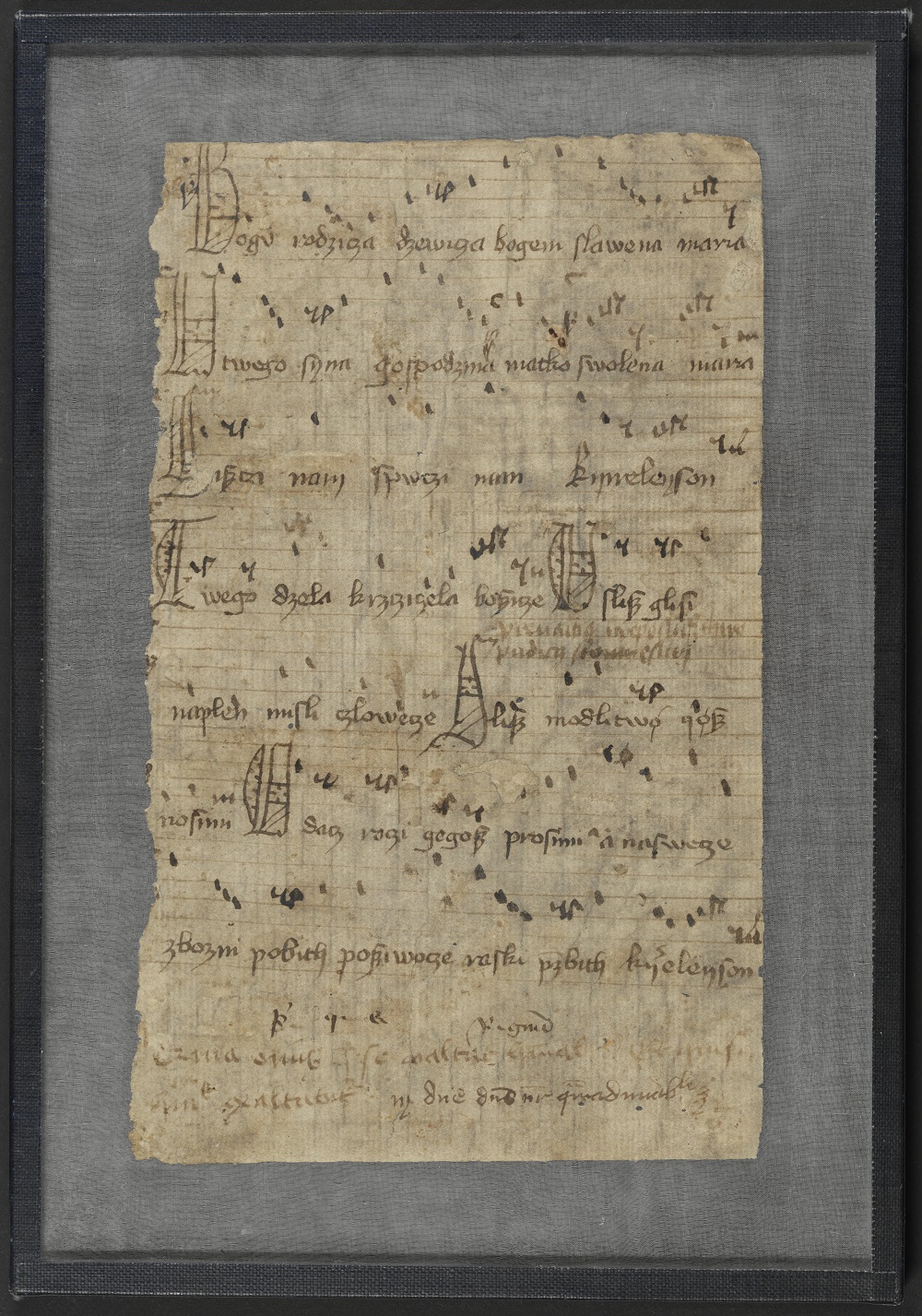Professional Western European music had reached Poland long before the manuscripts contained in the Stary Sącz monastic library were compiled. The music came here together with Christianity, confirmed by the baptism of Poland’s first historical ruler, Mieszko the First, in the year 966. The oldest song with a Polish text whose melody has been preserved is
Bogurodzica [Mother of God], often seen as a national anthem. Composed in the late 13th century, it uses a melodic fragment from a processional hymn already known in the 10th century. Its author or authors remain anonymous.
The earliest Polish composer known by name was the Dominican friar Wincenty of Kielce, author of the office
Dies adest celebris composed around 1225 for the worship of Bishop Stanislaus, an 11th-century Polish saint. The early 15th century brought the works of Petrus Wilhelmi de Grudencz (Peter of Grudziądz), a composer of German origin, student of the University in Cracow (now – the Jagellonian University), one of Europe’s oldest. He left behind 18 works in what was then a common European style. Another composer associated with Cracow, Nicolaus de Radom (Mikołaj of Radom), was, among others, the author of
Hystorigraphi aciem, a song narrating events that took place at King Władysław Jagello’s court. His compositions, written under the influence of Italian music as well as the schools from Burgundy and the Netherlands, demonstrates superb craftsmanship and, alongside existing records concerning the activity of other composers, they testify to the high standards of musical life in the late medieval capital of Poland.
Cracow remained Poland’s main musical centre also in the Renaissance, mainly owing to the king’s ensemble and the Capella Rorantistarum, founded by King Sigismund I the Old in 1543 at the Cracow Cathedral. Vigorous music activity resulted in the founding of music publishing houses and instrument building manufactures throughout the country. One outstanding Polish violin-maker, often called the Polish Stradivarius, was Marcin Groblicz, born around 1530 in Cracow. The extremely rare specimens of his work that have survived to our time, with beautiful dark sound and heads carved in the form of a dragon’s head, have enormous value. The Polish composers of this period – the most eminent of whom were Mikołaj of Cracow, Marcin of Lvov (Leopolita) and Wacław of Szamotuły – composed in all the genres of vocal church music. A unique achievement on the European scale was Mikołaj Gomółka’s choral setting of all the 150 psalms in Polish translations by Poland’s greatest Renaissance poet, Jan Kochanowski. Among the composers of instrumental music working in Poland, there were also outstanding lute players from other countries – the Italian Diomedes Cato and the Hungarian Bálint Bakfark.
Dr Mieczysław Kominek
Read more:
The Baroque in Polish music
The previous article:
From Polish music history - A prologue



